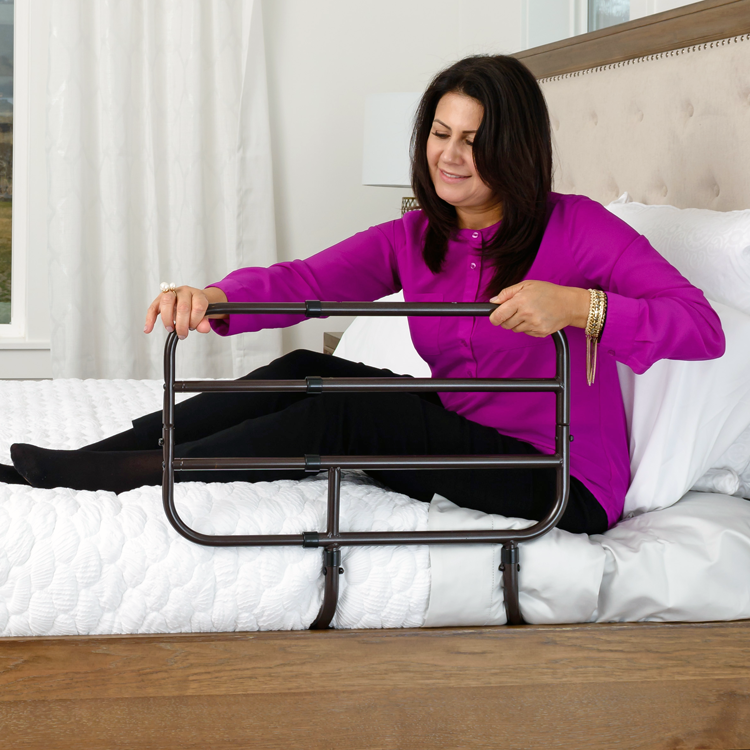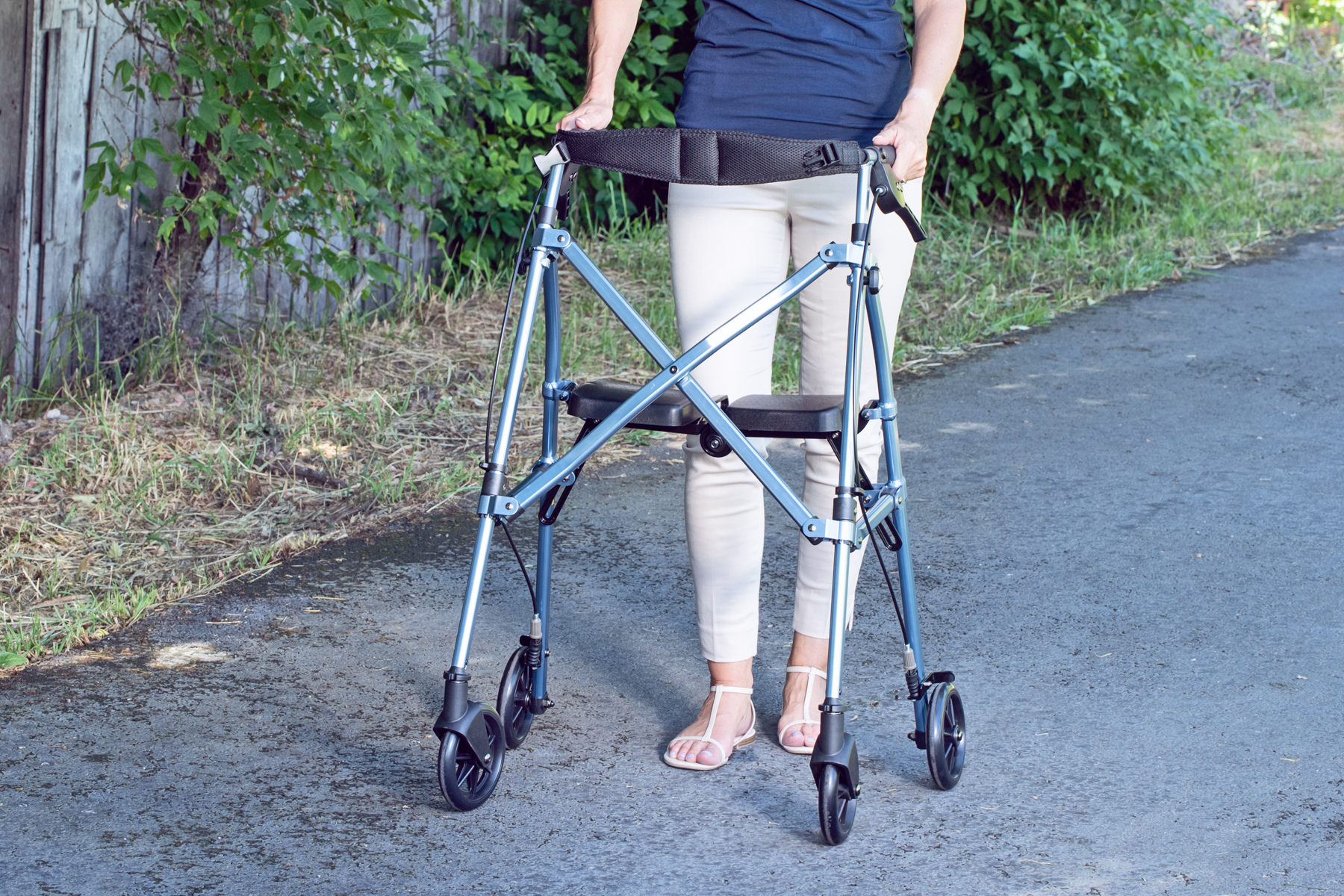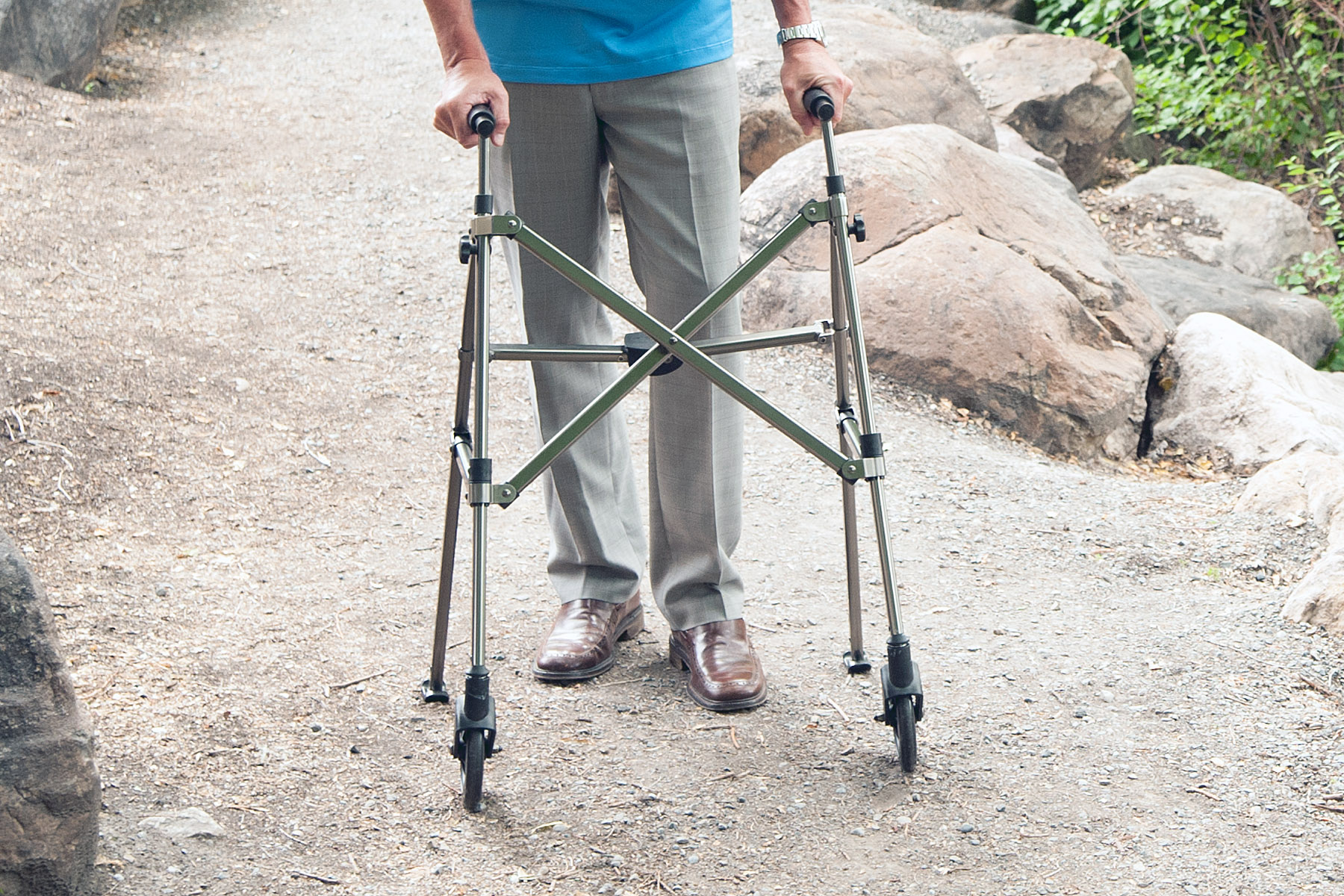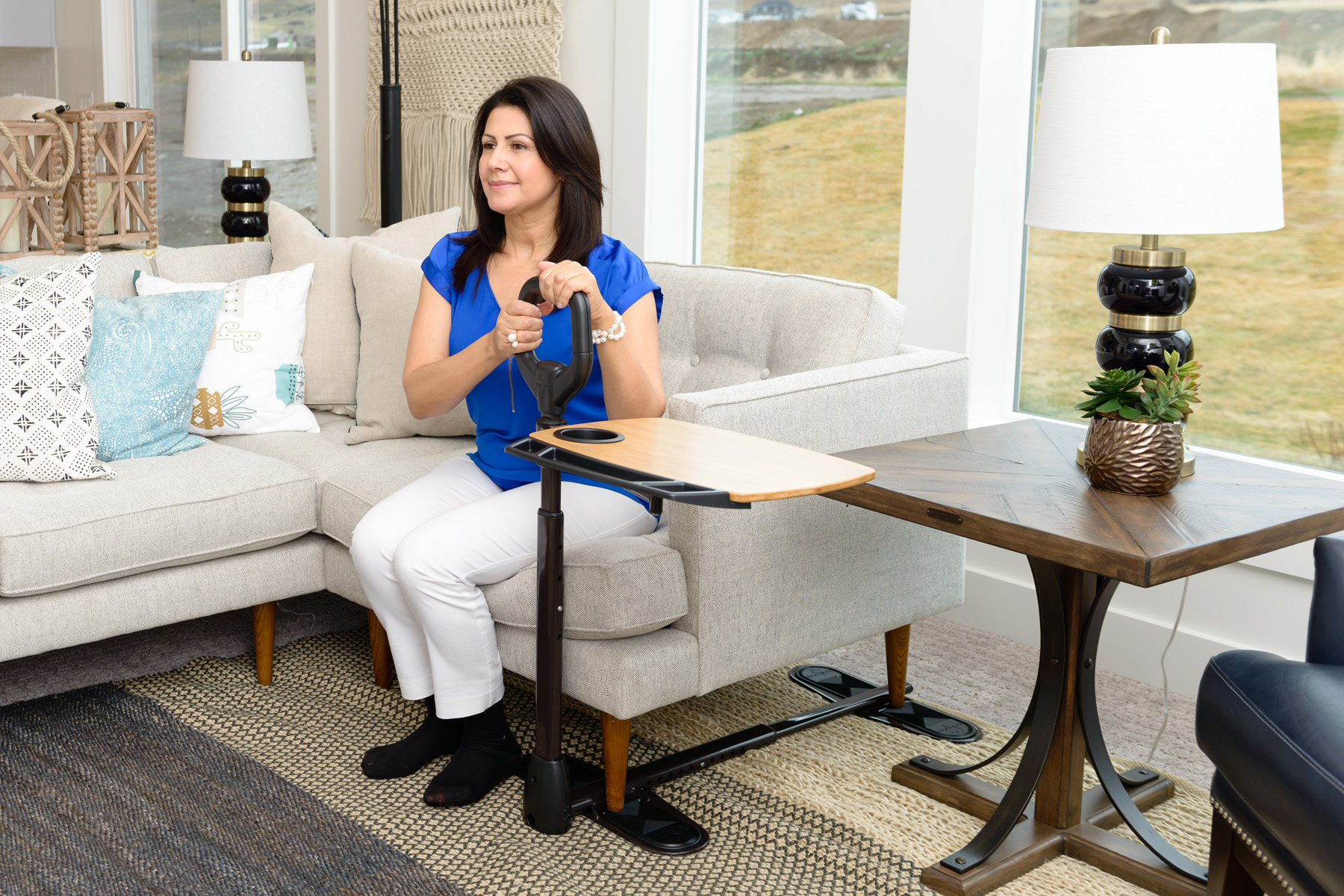what TO KNOW WHEN SHOPPING ONLINE FOR HOME SAFETY SOLUTIONS
Finding home medical equipment online can be easy and convenient, just as long as you know what to watch for to ensure safety and suitability
More and more aging Americans are making the decision to age in place at home. Aging in place is a growing trend that involves living at home longer instead of moving into an assisted living residency. While aging at home sounds more comfortable and familiar, it doesn’t come without its own challenges. Most homes have shortcomings in supporting aging adults who are experiencing a loss of mobility and may be prone to dangerous falls. Durable medical equipment (DME) is an essential part to making aging in place a comfortable and safe experience. With the increased rate of adults choosing to age in place at home, the need for seniors to purchase home medical equipment has rapidly increased.
DME is described as reusable medical equipment that is deemed necessary to use in the home. We often think of DME as canes, walkers, wheelchairs, and crutches, but it also extends to items like CPAP machines, blood-sugar meters, and oxygen. Last year, Americans spent over $55 billion on durable medical equipment! While Medicare and other supplemental insurance footed the bill for the majority of DME purchased last year, shopping for DME online has become an ever-growing trend due to its convenience, low-cost price, and an increased product offering to consumers.
Knowing What to Look for Online
Shopping online for DME is not unlike shopping for anything else. You want to do your research, find the best available product, and purchase it at the best possible price. And just like shopping for anything else, it can be easy to be overwhelmed with the myriad of options and information (or lack of information) that is available. To make things easier, we’ve put together a list of what to look for when you’re shopping for DME on the world wide web.
Shop on Safe and Secure Websites
The most important thing when shopping online is to ensure you are shopping on a safe and secure website. The fear of cybercrime doesn’t need to stop us from shopping online as long as we shop smart. Familiar sites, such as Amazon, are safe and trusted places to shop for home safety solutions. Just about every major retail outlet has an online store, including Walmart, Target, Bed Bath and Beyond, Home Depot and Lowes. Beware of misspellings or sites that use a different top-level domain (like .net instead of .com) to try and confuse you.
By rule of thumb, you should never give your credit card information to a website without SSL (secure sockets layer) encryption. The easiest way to tell if a website has SSL is by looking at the URL. Safe and secure shopping sites will start with HTTPS rather than HTTP. Additionally, a locked padlock will appear in the address bar. These secure websites will never ask you for information beyond what is necessary to make a purchase (name, email, shipping/billing address, credit card, etc). If a website is asking you to overshare personal information like your social security number or your birthday, stop and look to find the product elsewhere.
Buy from Reputable Manufacturers, Brands, and Sellers
Just as important as where you shop is who you are purchasing from. Not all manufacturers, brands, and sellers are made alike. When shopping online, it’s crucial to pay attention to who you are buying from and how their reputation is perceived.
It’s a safe bet to make a purchase when you see something like “ships and sold by Amazon” or “Ships and sold by Walmart”. This means that the retailer has vetted the product, purchased it directly from the manufacturer, and will ship the product from one of its warehouses. Often times you will see that a product is being sold on a marketplace from a third-party seller. Unfortunately, not all third-party sellers are created equal. Before purchasing from one of these third parties, we recommend doing some research to find out about the seller. The Better Business Bureau (BBB) has an online directory and scam tracker than is helpful when vetting a seller.
Additionally, most marketplaces have Seller Ratings and Seller Reviews. Past customers can offer star rating and review to describe their experience with that particular seller. These seller ratings and reviews can help provide an overview of how reliable, trustworthy, and easy to work with a seller has been in the past. Ideally, you will want to find a highly-rated seller with reviews that prove orders gets shipped on time, are accurate, and provide high-class customer service.
Read through Reviews and Frequently Asked Questions (FAQ’s)
Ratings and reviews about the seller are not the only reviews you should be paying attention to. Reading through reviews left about the product is one of the most helpful ways in determining whether a product is well suited for you. There are several important items of information we can learn from product reviews:
-
- The overall quality of the item
- How easy or difficult it is to assemble/install
- How useful the product is deemed by other customers in similar situations
- If past customers would recommend the product to people they know
Product reviews come from real people with first-hand product experience offers a realistic view of whether or not a product delivers on its promises. Look at the overall number of reviews left on a product, the average star rating, and the ratio between positive and negative reviews. While reading through reviews, look for trends and other points that are frequently mentioned. Common themes amongst reviewers give you a good understanding of what the product does well or what common problems are experienced. Keep in mind that it’s always good to read through both positive and negative reviews to decipher where the truth stands.
Frequently Asked Questions (or FAQ’s for short) are extremely helpful when looking beyond the information provided by a manufacturer. If you have a question about compatibility, fit, assembly, or just about anything else, you can submit your question and have a previous customer or manufacturer respond with an answer.
Pay Attention to Compatibility and Sizing Information
When shopping for home safety solutions like bed rails, grab bars, and standing aids, it’s essential to find a product that is compatible with the space or furniture on which the solution will be used. When shopping for a bed rail for example, there are several key pieces of information that you will want to look for. Reputable manufacturers will always list compatible bed types and appropriate mattress heights for their bed rails. A lack of detailed information from a manufacturer should be a red flag when shopping online for DME.
Pay special attention to product dimensions, weight capacities, and compatibility recommendations as well. If you are looking for a safety aid that works in tandem with a favorite chair, it would be wise to measure the chair before purchasing to ensure that the aid will fit properly in its intended resting place. Likewise, ensure that grab bars will fit on your wall spaces, transfer poles will work with your celiing type, and a rollator will fit through your doorway. Product images online can often be deceiving, leading someone to believe they are getting a product that is larger or smaller than it is. The best way to avoid surprise or disappointment is to pay attention to every detail provided.
Read through Shipping, Warranty, and Return Policies
Our last item on the pre-purchasing checklist is to read thoroughly through the shipping, warranty, and return policies set by a marketplace or seller. Just as we are in the habit of price checking at multiple stores, so too should we adapt the routine of comparing post-purchase policies.
When it comes to shipping, we find a wide variety of prices and policies across the internet. Some marketplaces provide free-shipping while others may require a minimum purchase threshold to be met to qualify for free or discounted shipping rates. Don’t be afraid to look around the internet to find the offering with the best shipping value.
In addition to differences in shipping options, many online retailers have differences in their return policies and warranties offered. Before making a purchase, be sure to read through a seller or marketplace’s return policy to understand the timeframe in which you are able to return a product, who is responsible for return shipping, and for how long a product is warrantied.
Internet shopping has become far too convenient to ignore. Besides the convenience, shopping online offers an expanded product assortment and competitive pricing that make it an attractive option when purchasing home safety equipment. By being aware, doing your diligence, and having a little patience, you don’t need to be wary about shopping online for mobility and fall prevention solutions!












